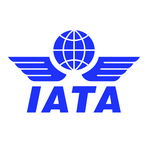Fear of Flying Grips Singapore After Turbulence Incidents
June 11, 2024, 3:31 am

Location: Switzerland, Geneva
Employees: 1001-5000
Founded date: 1945
Fear of Flying Grips Singapore After Turbulence Incidents
The fear of flying has taken hold in Singapore after recent turbulence incidents rocked the aviation industry. The fatal turbulence incident on Singapore Airlines flight SQ321 sent shockwaves through the country, leaving many anxious about taking to the skies. The subsequent turbulence on a Qatar Airways flight only added fuel to the fire, leading to a surge in inquiries for treatment for aerophobia, or the fear of flying.
Psych Connect, a specialist psychology clinic, has seen a significant increase in daily inquiries about aerophobia since the incidents. Dr. Sanveen Kang, the clinic's founder, described the events as a "double whammy" for those already struggling with the fear of flying. The timing of these incidents, just before the holiday season, has heightened anxiety levels among travelers.
Singapore's limited geographical landscape leaves little room for alternative modes of travel, forcing many to rely on flying for holidays and business trips. The normalization of flying in society has made aerophobia an isolating disorder, leading to feelings of shame and regret for those affected. The fear of missing out on experiences, both personal and professional, adds to the burden of those grappling with aerophobia.
Despite reassurances from aviation experts about the rarity of turbulence incidents resulting in serious injuries or fatalities, the fear of flying persists. Therapists emphasize the importance of addressing these fears through various techniques, including relaxation strategies, breathing exercises, and professional mental health support. It is crucial not to minimize the fears of those struggling with aerophobia but to provide understanding and support.
As the aviation industry grapples with the aftermath of the turbulence incidents, dark clouds loom on the horizon. Singapore Airlines and other carriers faced unprecedented challenges during the COVID-19 pandemic, leading to financial losses and workforce shortages. The industry's recovery has been marred by regulatory issues, increased competition, and rising operating costs, threatening to erode profits.
The talent war in the aviation sector poses another obstacle, with skilled manpower in high demand across various industries. The pandemic's impact on work-life balance and job security has led to a significant exodus of workers from the aviation industry. The complex and high-pressure nature of roles in aviation, coupled with extensive training requirements, creates a substantial lag in replenishing the workforce.
Global supply chain issues further complicate the industry's recovery, with delays in aircraft deliveries and maintenance posing challenges for airlines. The push towards sustainable aviation fuel adds another layer of complexity, with cost implications and supply constraints to navigate. Despite these challenges, opportunities for innovation and technological advancements offer a glimmer of hope for the industry's future.
As Singapore positions itself as a hub for aviation in Southeast Asia, local airlines have the opportunity to capitalize on the region's growth and connectivity. By differentiating themselves through network, product, service, and cost competitiveness, airlines can navigate the turbulent skies ahead. With a focus on improving passenger experience, operational efficiency, and safety, the industry can weather the storm and emerge stronger than before.
In conclusion, the fear of flying gripping Singapore in the aftermath of turbulence incidents underscores the challenges and opportunities facing the aviation industry. By addressing aerophobia with empathy and support, and by navigating the complex landscape of regulatory, financial, and workforce challenges, the industry can chart a course towards sustainable growth and resilience. As Singapore's airlines navigate the turbulent skies ahead, the journey towards recovery and innovation promises a brighter future for the aviation sector.
The fear of flying has taken hold in Singapore after recent turbulence incidents rocked the aviation industry. The fatal turbulence incident on Singapore Airlines flight SQ321 sent shockwaves through the country, leaving many anxious about taking to the skies. The subsequent turbulence on a Qatar Airways flight only added fuel to the fire, leading to a surge in inquiries for treatment for aerophobia, or the fear of flying.
Psych Connect, a specialist psychology clinic, has seen a significant increase in daily inquiries about aerophobia since the incidents. Dr. Sanveen Kang, the clinic's founder, described the events as a "double whammy" for those already struggling with the fear of flying. The timing of these incidents, just before the holiday season, has heightened anxiety levels among travelers.
Singapore's limited geographical landscape leaves little room for alternative modes of travel, forcing many to rely on flying for holidays and business trips. The normalization of flying in society has made aerophobia an isolating disorder, leading to feelings of shame and regret for those affected. The fear of missing out on experiences, both personal and professional, adds to the burden of those grappling with aerophobia.
Despite reassurances from aviation experts about the rarity of turbulence incidents resulting in serious injuries or fatalities, the fear of flying persists. Therapists emphasize the importance of addressing these fears through various techniques, including relaxation strategies, breathing exercises, and professional mental health support. It is crucial not to minimize the fears of those struggling with aerophobia but to provide understanding and support.
As the aviation industry grapples with the aftermath of the turbulence incidents, dark clouds loom on the horizon. Singapore Airlines and other carriers faced unprecedented challenges during the COVID-19 pandemic, leading to financial losses and workforce shortages. The industry's recovery has been marred by regulatory issues, increased competition, and rising operating costs, threatening to erode profits.
The talent war in the aviation sector poses another obstacle, with skilled manpower in high demand across various industries. The pandemic's impact on work-life balance and job security has led to a significant exodus of workers from the aviation industry. The complex and high-pressure nature of roles in aviation, coupled with extensive training requirements, creates a substantial lag in replenishing the workforce.
Global supply chain issues further complicate the industry's recovery, with delays in aircraft deliveries and maintenance posing challenges for airlines. The push towards sustainable aviation fuel adds another layer of complexity, with cost implications and supply constraints to navigate. Despite these challenges, opportunities for innovation and technological advancements offer a glimmer of hope for the industry's future.
As Singapore positions itself as a hub for aviation in Southeast Asia, local airlines have the opportunity to capitalize on the region's growth and connectivity. By differentiating themselves through network, product, service, and cost competitiveness, airlines can navigate the turbulent skies ahead. With a focus on improving passenger experience, operational efficiency, and safety, the industry can weather the storm and emerge stronger than before.
In conclusion, the fear of flying gripping Singapore in the aftermath of turbulence incidents underscores the challenges and opportunities facing the aviation industry. By addressing aerophobia with empathy and support, and by navigating the complex landscape of regulatory, financial, and workforce challenges, the industry can chart a course towards sustainable growth and resilience. As Singapore's airlines navigate the turbulent skies ahead, the journey towards recovery and innovation promises a brighter future for the aviation sector.
